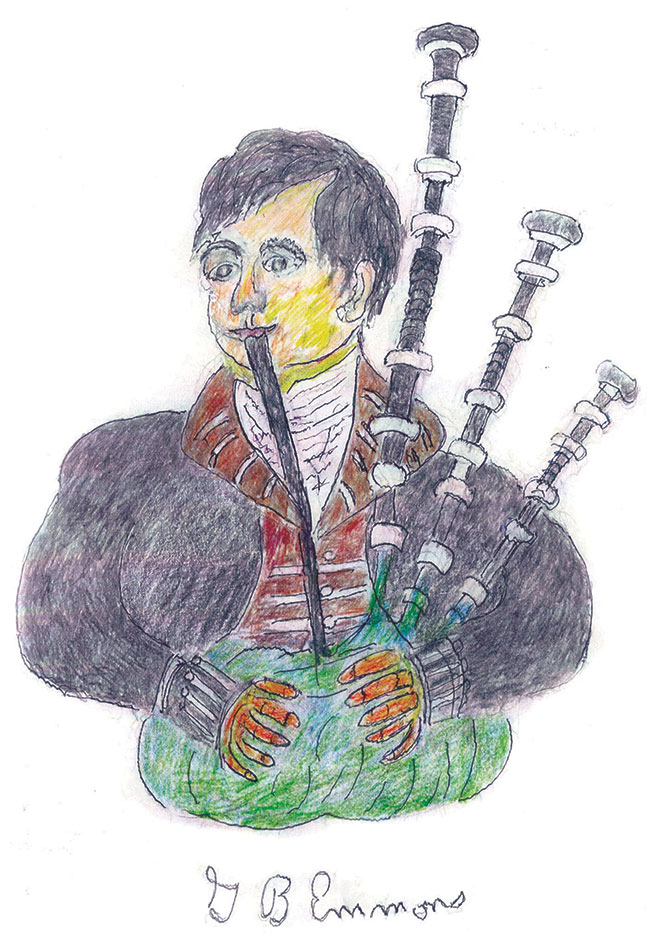Robert Burns, who lived from 1738 to 1798, is today renowned in the literary English-speaking world as Scotland’s so-called Ploughman Poet; this title is both spelled and pronounced in heavy Scottish brogue to relate to his pastoral pleasures of writing verse and music in the 18th century with a Highland flair.
His parents were hard-working tenant farmers, and the hardship of this feudal life took its toll on the free-minded Burns. As he matured, his attention turned to an inner passion for creative writing and composing verse and song. He evolved as a well-known Gaelic romantic pioneer and founder of social and liberal orchestration of his life and the times. During this productive period in his working life, he was distracted by illicit affairs with women and drinking, but by the age of 27, he became famous for poems such as “To a Louse,” “To a Mouse,” and “The Cotter’s Saturday Night.”
Perhaps the most remarkable quality about his masterpieces is their sing-ability and perspicacity in how he joins words to tunes that gave his rhythmical flow of verse and phrases an authentic effect of Highland creation. I have illustrated Burns as playing the bagpipes because, like the tartan clan colors, they have become iconic symbols of both Highland and Lowland life where a town piper parades the local streets to wake people up in the morning or announce the end of the day time to go to sleep.
The instrument began with an air bag, chanter, and one single drone (pipe), with the addition of a second in the 1500s. A third “great” drone added in the early 18th century gave the instrument a volume that made the pipes audible for up to seven miles. From across the Highland crofts and from glen to glen down the mountain way to the Lowlands of Loch Ness’ shores and meadows, the mournful cadence of dirge of marching into the battle was the ceremonial essence of Scottish nationality.
Before he died in 1798, Burns was elected as the national poet of Scotland. After he was gone, his friends gathered annually on his birthday, January 25, to celebrate with memorial events that included a haggis meal with his poetry before serving. After the meal, two poems were recited: “The Immortal Memory” and “Toast to the Lassies.”
The second poem paid tribute to Burns as a man with a way with women and the many songs he wrote about them. This tribute later became a national holiday every year in Scotland, but elsewhere second fiddle to his iconic New Year’s Eve classic “Auld Lang Syne.” The festive ceremony was sung by a group of family and friends holding hands in a circle of mutual remembrance of “auld acquaintance” and time not to be forgotten.
This tribute to Burns’ nostalgic work has earned its status of quintessential worldwide celebration and recognition at the exact midnight moment of the countdown in Times Square, New York City, with the playing of the tune by Guy Lombardo’s Royal Canadian Orchestra before the flaming ball of fire drops to usher in the New Year.
If I may, I shall take this image of remembering to wish you all a very Happy New Year.
By George B. Emmons
